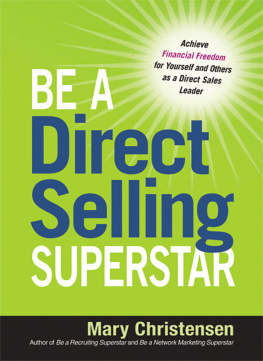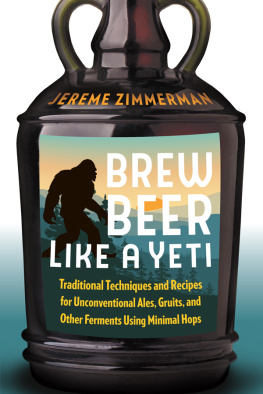Copyright 2015 by Emma Christensen
Photographs copyright 2015 by Katie Newburn
All rights reserved.
Published in the United States by Ten Speed Press, an imprint of the Crown Publishing Group, a division of Random House LLC, a Penguin Random House Company, New York.
www.crownpublishing.com
www.tenspeed.com
Ten Speed Press and the Ten Speed Press colophon are registered trademarks of Random House LLC.
Library of Congress Cataloging-in-Publication Data
Christensen, Emma, author.
Brew better beer : learn (and break) the rules for making IPAs, sours,
Belgian beers, porters, barleywines, lagers, ancient ales, and gluten-free beers / Emma Christensen.
pages cm
1. Brewing--Amateurs manuals. I. Title.
TP570. C557 2015
663.3--dc23
2014031950
Hardcover ISBN: 978-1-60774-631-7
eBook ISBN: 978-1-60774-632-4
v3.1
INTRODUCTION
My relationship with homebrewing did not get off to the best of starts. I was plenty eager and I had a lot of shiny new equipment, but an hour after returning from my first trip to the homebrew store, I felt completely and utterly baffled. I was also not in the kitchen; I was sitting on the couch in my living room with three different, slightly contradictory sets of brewing instructions laid out on the coffee table before me. My husband was tackling this new hobby with me, and neither of us had any idea where to begin or which instructions to follow or even how to move off the couch.
Once we formed a plan of action, the situation (unfortunately) did not improve. The liquid malt extract wed purchased was roughly the consistency of tar and wouldnt come out of the container. Our beer juice (which some, though not all, instructions mysteriously referred to as wort) took forever to come to a boil. And once it did, it continued to boil right over the side of the pot, extinguishing the burners pilot light and making a gigantic mess. My husband and I argued about whether the batch was ruined or if we could just add some more water and carry onthe first of many such stressed-out and frustration-fueled fights to follow. To date, some of our most ferocious battles as a married couple have happened while brewing beer.
Sound familiar? Maybe your first brew day (and possibly many others) went along similar lines. Maybe youve never brewed before and are reading this in horror, wondering what possessed you to ever think homebrewing might be fun to try.
Dont worry. Ive got your back. What youre holding in your hands right now is the result of many years of learning and tinkering with how to brew beer at homewithout the tears or cursing. My number one goal is to guide you through those first few brewsthe ones where everything is brand-new, you have no idea whats going on, and the potential for frustration is highand into a place where you feel confident stepping into the kitchen with nothing but a bag of grains and a desire for beer. The title for this book is also a promise: I want to help you brew better beer.
Why homebrew in the first place? Because its seriously fun. Because it tickles your inner science geek. Because your first batch is instant membership into a fellowship of homebrewers that stretches back for eons. Because there is no finer feeling than flicking the cap off a bottle of beer, hearing that hiss of carbonation, and taking the first sip of a beer you brewed yourself.
NEW HOMEBREWERS,
START HERE
Heres what I didnt know when I started brewing and what took me many years to realize: there is no one right way to brew beer. When it comes to homebrewing, there are many ways to arrive at the same endwhich is to say, beer. The basic method is the same (well talk about that in ), but when you peer a little closer, youll find a million different variations and tweaks that you can make at almost every step of the process.
This is both reassuring and potentially confusing. Its reassuring because any way you go about it, youll make beer. Hooray! Dont sweat the details; pick a path and be confident that youll have beer at the other end. But its also confusing because, Which path do you choose? Its like trying to navigate through a new citythree different people give you three different sets of directions. One is the most direct but has the most traffic; another takes you on a scenic route but takes an extra hour; another is a shortcut but might get you lost. Beer brewing is like this. If you have three slightly different sets of instructions telling you how to brew beer, where do you start? How do you even get off the couch?
I might be a little biased, but I think you should start here, with this book. The methods I describe in the first few chapters give you a solid foundation for brewing your own beer. They give you the tools and the know-how to navigate this wily world and to make better decisions when you encounter new ideas and opinions later on. I promise you this: stick with me and you will make beer!
And once you have a handle on how home-brewing works, its just a small jump into brewing all sorts of different beers. All the recipes in this book follow the same master method described in .)
One last note: You might be under the impression that you need a man-cave or a huge garage or some other such area in order to brew beer at home. Nope. If my experience for the past six years is anything to go by, an 800-square-foot apartment works just fineand I know people who brew fantastic beer in even smaller spaces. You can tailor your homebrew habit to match your space, your budget, your free time, and any other constraints you may have. Ill show you how.
VETERAN HOMEBREWERS,
NOW HEAR THIS!
Youve been brewing beer for a while and youve already got a system that works for youI respect that. Heres what I want for you: I want to help you brew the beer of your dreams. Your beer is already good; lets make it even better.
I want to give you the keys to the brewery. Figuratively speaking, of course. I want to show you exactly when and where and how you can tweak a recipe to make it your own. Youll find a lot of great information in the essays between each chapterlike what happens when you change the mash temperature, how to turn any brew into a sour beer, and habits that will make you a better homebrewer. You can also see these ideas put into practice as we move through the recipes in each chapter, going from the basic Very Good beers to the variations that follow.
I give you full permission to take these methods and use them however you see fit. If you can imagine it, you can brew it. Be adventurous. Brew the beer you want to drink.
IS HOMEBREWING LEGAL?
Yes, homebrewing beer is totally, completely legal. In the United States, you are limited to 100 gallons of homebrew per adult or 200 gallons per household, which should really be quite enough to keep anyone happy, dont you think? Drink your homebrew yourself, share it with friends, or even trade it with other homebrewersits yours to do with as you will.






















